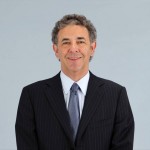Is Home Bancshares pressing luck in Florida with deal No. 13?
By John Reosti
Home Bancshares Chairman John W. Allison left no doubt he wanted Stonegate Bank … badly.
Not only did he call it “my dream deal,” but Allison said that for months if not years he feared a rival might snag the Florida bank. “If Stonegate decided to sell to somebody else, I would have been extremely disappointed the rest of my life,” he said.
His long pursuit ended this week when Home agreed to pay $778 million in cash and stock for Pompano Beach-based Stonegate.
Such obsessive talk naturally raises questions about the wisdom of any business transaction — especially in a state like Florida whose economy fell hard during the crisis years, hurting many banks that had expanded there, yet has blossomed again in recent years. Several bank deals have occurred there lately, including Iberiabank’s $1 billion agreement a nearly a month ago to buy Sabadell United Bank.
During a conference call about the deal, at least one analyst raised concerns that there are already signs that the Florida market’s comeback may be petering out. Similar questions surfaced after the Iberiabank deal.
Allison and Stonegate CEO Dave Seleski said worries about a new bubble were overblown.
“Some are concerned we’re overheating here” in South Florida, Raymond James analyst David Feaster said on the call.
“We’re still having a massive amount of people moving into South Florida, so I don’t think that’s necessarily a problem,” Seleski replied. “Is Florida starting to slow down a little? Yes, but that’s just how it is. We’re not seeing any asset- quality issues in our portfolio. We’re not seeing any more past-dues. In talking to my peers, we don’t see it.”
At Dec. 31, Stonegate’s nonaccrual loans totaled $8.6 million, or 0.38% of its $2.3 billion loan portfolio.
Allison said that he is “constantly looking” for signs flippers or speculators are affecting the market but that he has yet to see any.
“Can I be fooled? I don’t think so. I don’t think Dave can be fooled,” Allison said. “We live this. I’m constantly digging for information down there. I’m looking for crazy deals being done. … If there’s a bubble, it’s happening and we don’t see it.”
The deal was unquestionably bold. It is the largest in Home’s 20-year history, and the Conway, Ark., company announced plans Tuesday to offer $150 million in subordinated debt to help finance the transaction.
The $3.1 billion-asset Stonegate’s status as the sole American bank authorized to do business in Cuba added an intriguing twist to the deal that was strong enough to attract the attention of Arkansas Gov. Asa Hutchinson.
“I want to mention one thing,” Hutchinson said Monday during a brief ceremony Home organized to announce the deal. “[Seleski] and I talked about this. Stonegate has a presence in Cuba. This is something I hope we can capitalize on. I know this will be good for our agricultural community. I think it’s a great opportunity for the future. I’m delighted to have that Arkansas banking connection now.”
Allison said the Cuba link was not a significant factor in Home’s decision to purchase Stonegate, but he was quick to add that he sees “some pretty good opportunities coming down the road.”
“Dave likes [Cuba],” Allison said. “It’s an understanding process for our people to learn what he’s learned. The more he talks about it the more excited I get about it.”
Allison added that he and Seleski plan to visit Cuba “in the next couple of weeks.”
For his part, commenting on the conference call, Seleski described Cuba as a “kind of a sideshow compared to what we’re trying to put together in Florida.”
According to Home, the corporate parent of the $9.8 billion-asset Centennial Bank, the merged company will hold $5.1 billion of deposits in Florida, making it the state’s third-largest community bank. It will rank No. 1 among community banks in affluent Broward County, which includes Pompano Beach, as well as Sarasota County.
On its most recent call report, Stonegate reported noninterest expenses totaling $56 million for 2016. Noting the significant overlap in the two companies’ branch footprints, Home is calculating a 34% cost save, but Allison said it should be able to exceed that mark with little difficulty.
“This is really an in-market consolidation, so there will be substantial savings in this organization,” Allison said.
Home operates 68 branches in Florida, along the Gulf Coast and in the central and southern regions of the state. Stonegate operates 25 branches in South Florida.
The deal is expected to close in the fourth quarter. As soon as it does, Seleski will serve as a regional president, probably running Home’s entire Florida operation, Allison said.
Home has been an active buyer in Florida, acquiring 12 banks there since 2010. Stonegate, which reported net income of $28.9 million last year, is both the largest and the most profitable, Allison said.
“We’ve been known in the past for buying what they call dent-and-scratch banks where you have to fix them up a little bit,” he said. “Today, we’ve moved on to a great financial institution … [Stonegate] is truly the cream of the crop in Florida.”
Home and Stonegate have eyed each other for some time, according to Allison.
“We’ve been kind of dancing around Dave for two or three years and he has been dancing around us,” Allison said, adding that negotiations began in earnest in January.
In a conference call that month, Allison told analysts Home was working on some “nice transactions.”
Miami investment banker James Cassel, chairman of Cassel Salpeter & Co. Investment Banking, said one of Stonegate’s biggest selling points was its scarcity.
“There haven’t been a lot of new charters down here since 2007,” Cassel said Tuesday. “There’s only so many of these banks remaining. It’s not like there’s a huge crop that can come up and be sold.”
Cassel agreed with the deal’s architects that the South Florida economy is basically sound.
“South Florida is a pretty good market,” he said. “The economy is growing down here, and Stonegate has built a good bank.”
For now, closing its deal for Stonegate and ensuring a smooth integration process would be Home’s top priority, but Allison pointedly refused to rule out doing additional deals in the meantime.
“M&A is never off the table at this company,” he said.
Click here to view original article.





